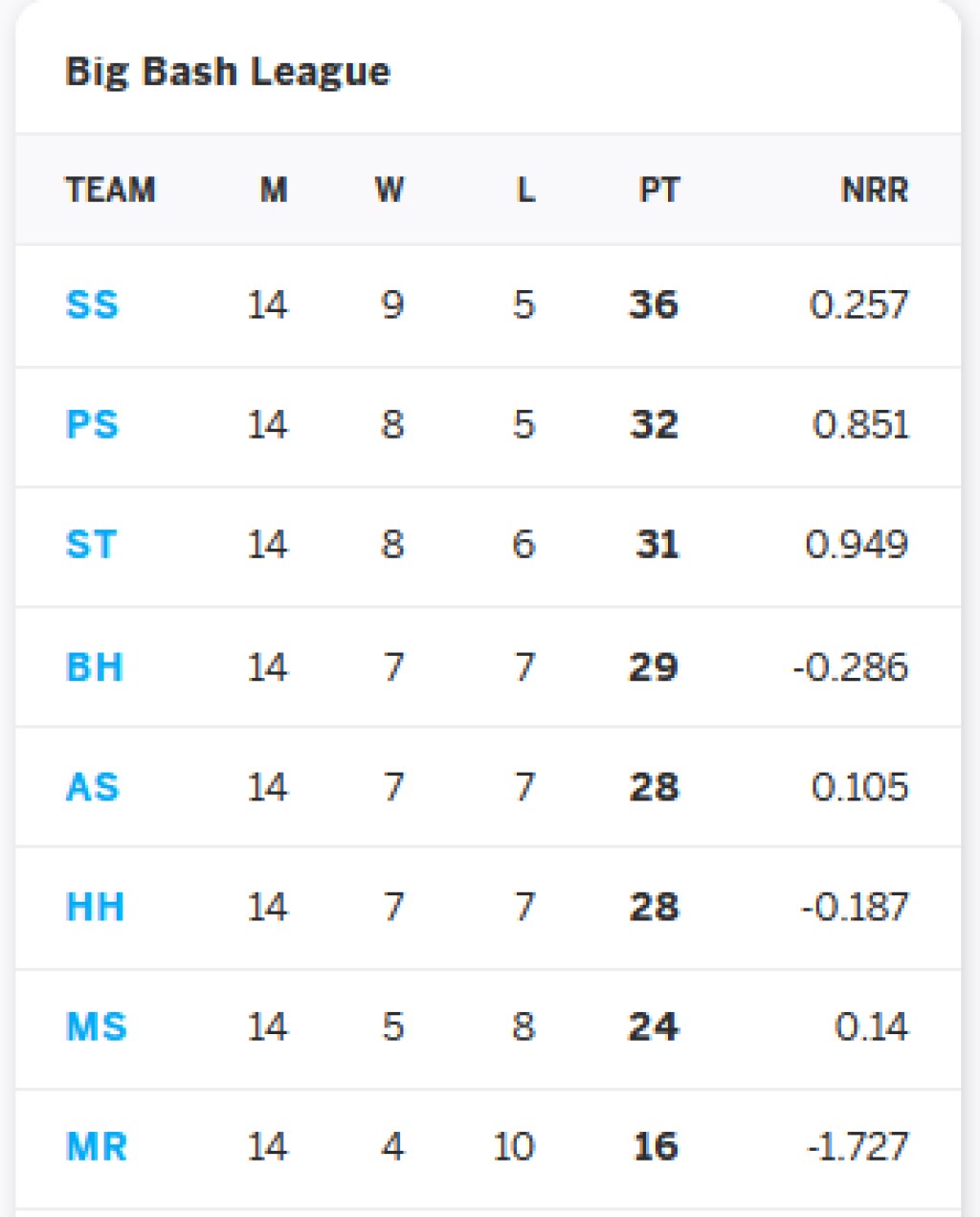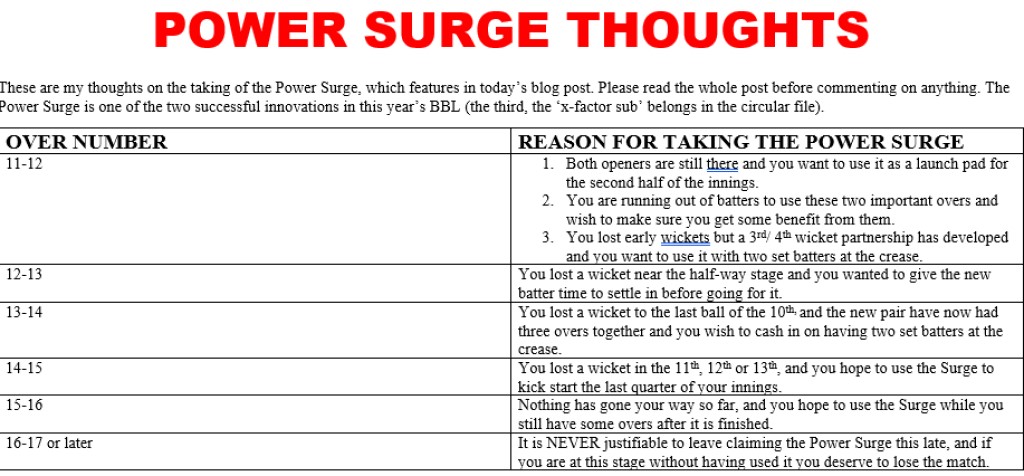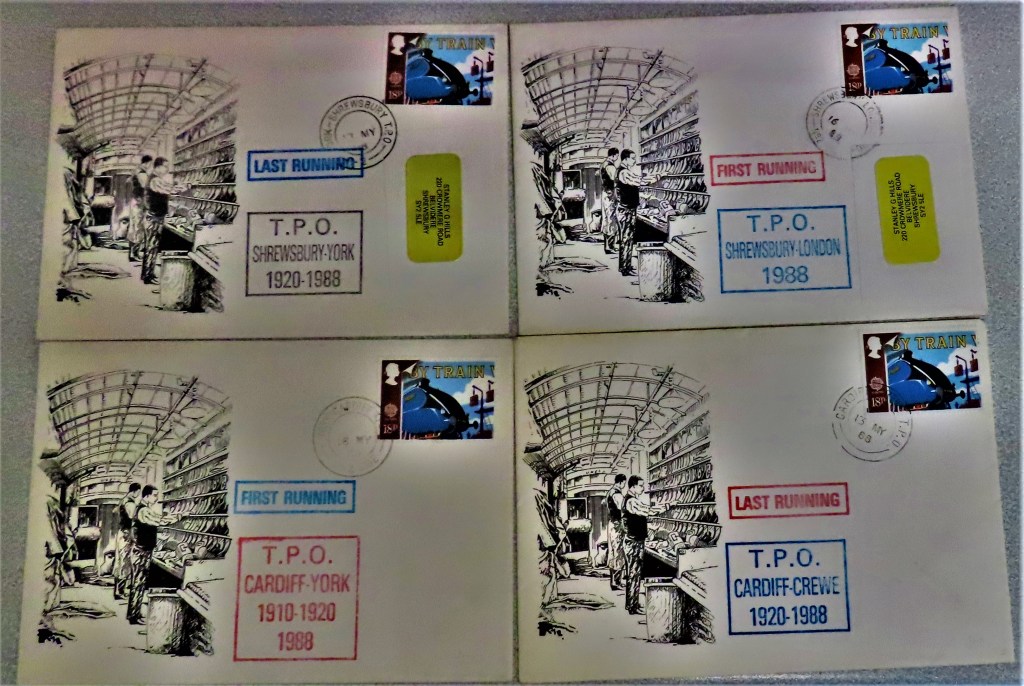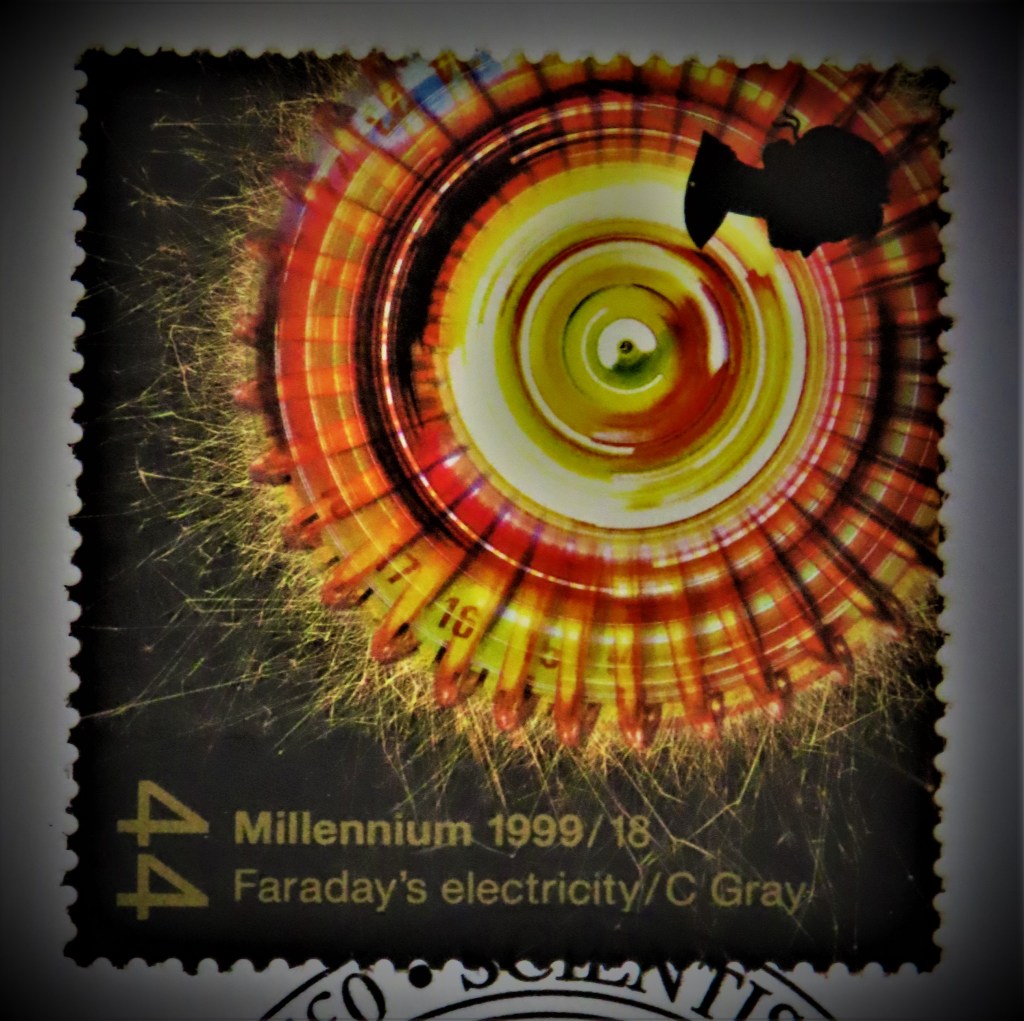The graphic which heads this post is the final group table of BBL10, screenshotted from cricinfo.com. In this post I look back at the 56th and final group game, analyse the qualifying system in place for this tournament and offer final views on the three innovations. I would like to say at this point, in case the rest of this post gives a wrong impression, that I have enjoyed the tournament, and my criticisms are offered in a constructive spirit.
STARS STUFF UP SEES THEM CRASH OUT OF BBL10
With Heat beating Scorchers to secure a qualifying place and Renegades final act of the tournament being to eliminate the Hurricanes the 56th and last group game, commentary of which was broadcast on five live sports extra presented a stark situation to the two combatants: Stars needed the full four points (three for the win and one for the Bash Boost) to qualify (with a sensible qualifying system they would already have been gone – more on this later). Sixers meanwhile needed the Bash Boost point at minimum to win the group, and a victory of any sort to do so outright rather than on net run rate.
With Stars needing all the points they had to get big runs in the first ten overs of their innings, but they failed to pick up this message. Nick Larkin, a known slow starter, was sent in at number three, and in this case provided the expected slow start and then failed to go on (11 off 16 balls). Then, at the end of the tenth, setting the Bash Boost target, Nic Maddinson came back for a second on the penultimate ball rather than leaving the big hitting Maxwell on strike. Two more accrued of the last ball of the tenth, leaving Stars on 72-3, and a modest target for the Sixers to claim the all-important first point of the game, which would ensure no Melbourne participation in the final stages (Renegades’ win had not altered their final position – last).
Overs 11-15, which included the Power Surge being taken for overs 14 and 15 were the best part of Stars’ day, as they scored 52-1 in that period to reach 125-4 at the three-quarter mark. They lost a little momentum in the closing stages, but three sixes in the final over boosted them to 177-6, a respectable total, though not very relevant as their poor handling of the first ten had likely cost them any chance of qualifying.
Faced with the situation they were in Stars should have front loaded their batting with all their biggest hitters, realising that their 20 over score would only be truly relevant if they went big in the first ten. Nick Larkin as a known slow starter should probably not have been picked for this match at all.
Sixers lost a couple of early wickets, but by the end of their four over power play were 43-2, 11 runs ahead of Stars at the same stage. They also outscored Stars in the second phase of the innings, albeit only by two runs, being 85-3 at the halfway point, and having already won the war, securing their own status as group winners and the elimination of the Stars, although a Pyrrhic victory in the final battle remained on for the Stars.
Overs 10-15 did not go especially well for the Sixers, who reached the three-quarter way stage at 126-5, 1 run ahead, but one wicket behind the Stars. They picked things up in the final quarter however, and in the end a boundary struck by Dan Christian of the penultimate ball of the match ensured that Stars would not even have a Pyrrhic victory to finish. Sixers deservedly topped the group, and I for one have no sympathy for the Stars, who made a complete mull of their approach to this game, and who in the words of Anne Robinson “Leave with NOTHING.”
A FLAWED
QUALIFICATION SYSTEM
Although it lent a few of the final group games an interest they might not otherwise have had, a qualification system that allows five teams out of eight to progress to the knockout stages has to be considered flawed. Firstly, in order to reward each qualifying team according to their placement the knockout phase is byzantine in the extreme. Secondly, it means that average teams are being rewarded – the teams in the 4th and 5th qualifying spots each recorded seven wins and seven losses, which does not deserve to be enough to progress. Tournaments that are organized on part league part cup lines should reward only teams who are exceptionally successful in the league phase – and losing as many games as you win is not exceptionally successful on any definition. My own preferred method for an eight team tournament would be as follows: three teams qualify for the final stages, the group winners going straight through to the final, while the second and third place teams play off for the right to join them, with the second placed team having home advantage by way of reward for doing better than the third placed team. This would make the tournament more compact by reducing the number of knockout matches, although they also need to have more days on which multiple matches are played in the group stages, and would ensure that only teams who are clearly better than the rest get to play in the knockout matches.
THE THREE INNOVATIONS
BBL10 featured three innovations this year: the Power Surge, reducing the opening Power Play from six overs to four, with a two over Power Surge to be claimed by the batting team at any point after 10 overs, the Bash Boost point, awarded to the team with the better score at the halfway stage, and the ‘x-factor’ sub where specifically at the halfway stage of the first innings each team may swap out one player for one of their designated ‘x-factor’ subs. I am a huge fan of the Power Surge, though a number of teams have misused it, being wary of going early and ending up without front line batters to cash in on it, and would like to see it adopted in other T20 competitions. The Bash Boost point has overall been a success, although a combination of the importance it assumed today, and Stars’ flawed approach caused it to spoil this particular game somewhat, and again albeit under a different name, it might well be worth other T20 competitions adopting it. The ‘x-factor’ sub rule belongs in the circular file, and has in my view contributed nothing to the tournament. If you need to alter the balance of your side after the start of the game, the one valid reason for using such a sub, you should have got it right first time.
PHOTOGRAPHS
My usual sign off:


















































